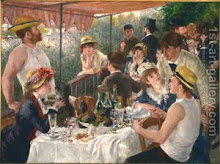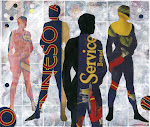Learning
how to draw is easier than you think. All you need are a few basic supplies,
your imagination, and some patience. These step-by-step instructions will help
you get started drawing with simple lessons and tips on choosing the right art
materials.
If
you're just starting out, all you really need to draw are a pencil and paper. A
good yellow No. 2 pencil and some blank printer paper will do just fine.
Although you don't need to buy special art supplies, here are a few that are worth
the investment if you want to continue to explore drawing.
Artist's pencils:
These range in hardness from around 9B (very soft) up to 9H (very hard),
depending on the brand. The harder the graphite/clay core, the finer the line
you can produce. Most beginners find that a selection of 2H, HB, 2B, 4B, and 6B
is more than adequate to start with.
Erasers:
Kneadable erasers, which you can stretch and fold like putty, are great for
producing a clean surface. White plastic erasers can be cut with a knife
to make a fresh edge for erasing crisp lines. Buy one of each.
Pencil sharpener: A plastic blade-type sharpener will do the job just fine.
Paper: A good art-supply
store stocks everything from newsprint for sketching to heavyweight rag drawing
board for fine art. Newsprint is cheap, available in a variety of sizes, and a
good choice for beginners. A 9-by-12-inch pad is compact, while an
18-by-24-inch pad will give you more room.
Remember
to keep it simple. Master one medium at a time, adding new materials once
you're confident with the ones you already have.
Beginner Exercises
Now
that you've acquired some basic art supplies, it's time to start drawing. As
with anything new, remember to be patient with yourself; learning a new skill
takes time. These exercises will help you develop an eye
for line, form, and depth.
Outlines:
Choose a subject with a very basic shape, such as a piece of fruit. Draw the
outline several times. Don't worry if your first few attempts don't look very
realistic. The idea is to get comfortable looking at and reproducing forms.
Contours:
After you're comfortable sketching basic shapes from sight, it's time to try
sketching an object without looking at it. Instead, allow your eyes to follow
the contour of your subject and trust that your pencil will follow.
Shading:
Choose a few of your best versions and add shading for depth. Note where the
light and shadows fall, and use your pencil and eraser to replicate the
shading.
Don't
try and cram all of these exercises into one sitting. Allow yourself the time
to explore each technique and don't be afraid to repeat the process. As you
practice, you'll begin to develop a sense for how the pencil behaves as it
moves across the paper, allowing you to refine your line and shading work.
Your Sketchbook
No
artist improves without practicing regularly, not even Leonardo da Vinci. By keeping a sketchbook
handy, you'll always have a ready place to practice. It's also a safe place to
make mistakes and explore.
You
can find a variety of sketchbooks at your local art store in a range of sizes,
prices, and bindings. Here are a few factors to consider.
Size: Choose a book that's
small enough to be carried easily but large enough that your hand will have
room to draw.
Paper: Most sketchbooks have plain, unlined paper, but you can
find books that have gridded or lined pages. The paper should have a fine
tooth (meaning it's smooth to the touch) to allow for even lines as you draw.
Binding:
You'll find hard- and soft-bound sketchbooks. Spiral- or tape-bound spines
usually have more give than hard-bound ones, allowing you to lay the book flat
and use more of the page.
Over
time, your sketchbook will become a repository for your sketches and ideas for
projects, and you'll see how your skill as an artist has evolved.



No comments:
Post a Comment